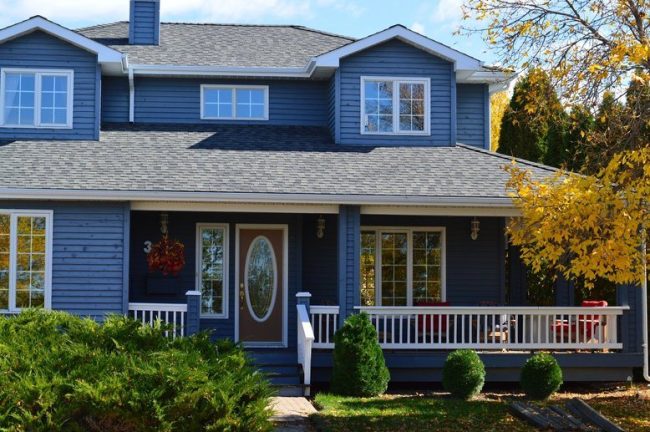
The look of your home can dramatically impact its curb appeal and value. The right exterior paint colors can make your home look inviting, beautiful, and distinctive while protecting it from the elements.
Proper maintenance, including cleaning and sealing, is essential to extend the lifespan of your paint job and keep it looking its best for years to come. In this blog post, we will guide you on choosing, using, sealing, cleaning, and making the most of your exterior paint colors.
Contents
Understanding the Importance of Exterior Paint Colors
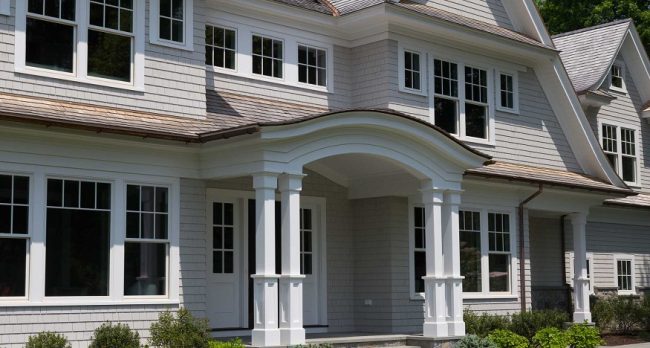
Exterior paint colors are more than just aesthetics; they’re the first handshake your home offers. The hues you choose set the initial impression for your property, greeting visitors and onlookers with a glimpse into your style and taste. But the role of exterior paint extends far beyond mere beauty.
A well-chosen, quality exterior paint is your home’s armor, standing guard against the relentless battering from sun, wind, rain, and other environmental factors. It’s your first line of defense, preserving your home’s structural integrity and offering protection that’s as tough as it is appealing.
Moreover, it wards off unwanted guests, such as pests, and deters potential damage from mold and mildew. A good exterior paint job is an investment in your home’s visual appeal and its long-term durability and preservation.
So, while selecting a paint color might seem simple, remember its significance extends far beyond color coordination. It’s a crucial decision with implications that influence your home’s curb appeal and safeguarding.
So take your time, ponder your choices, and then proudly let your home wear your selection like a suit of armor that’s robust and stunningly stylish.
The Art of Choosing the Perfect Exterior Paint Colors
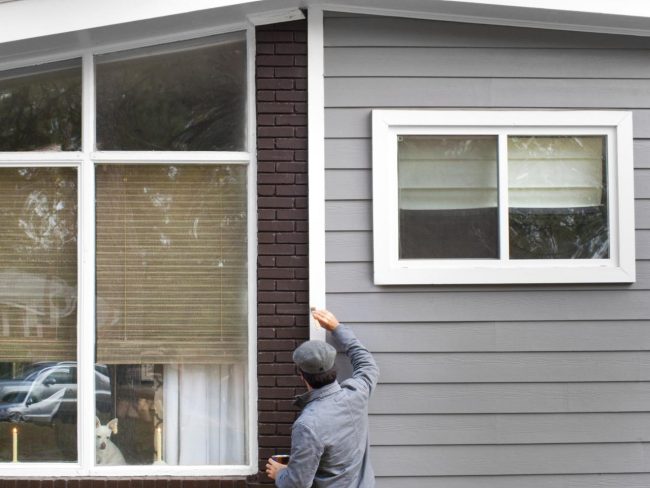
Selecting the right exterior paint colors can feel like a high-stakes game of chance. It’s more than just picking a color that catches your eye; it’s about harmonizing with your home’s architecture, blending with your surroundings, and making a statement about your style.
The color of your home’s exterior can shrink or magnify its appearance, adding or reducing depth. Darker shades can lend an air of solidity and coziness, making your home look smaller but more substantial.
Conversely, lighter shades can create the illusion of a larger, more prominent structure, albeit a tad less anchored. It’s all about balance and achieving the blend that suits your taste and your home’s character.
Before you make a final call on your color, experiment a little. Paint trim inconspicuous spots with your shortlisted shades and observe them at various times of the day under different lighting scenarios.
This practice will give you a more realistic view of how the colors will look on a larger scale and in varying light conditions. The ideal exterior color is one that consistently complements your home, regardless of whether it’s basking in the morning sun, hiding in the afternoon shade, or twinkling under the evening stars.
Remember, your choice of exterior paint color is not just a matter of personal preference. It’s an opportunity to enhance your home’s architectural style, create a welcoming ambiance, and respect the aesthetic unity of your neighborhood. So take your time, explore your options, and when you finally find that perfect shade, let it breathe life into your home’s facade and make a strong, lasting impression.
How to Paint Your Home’s Exterior
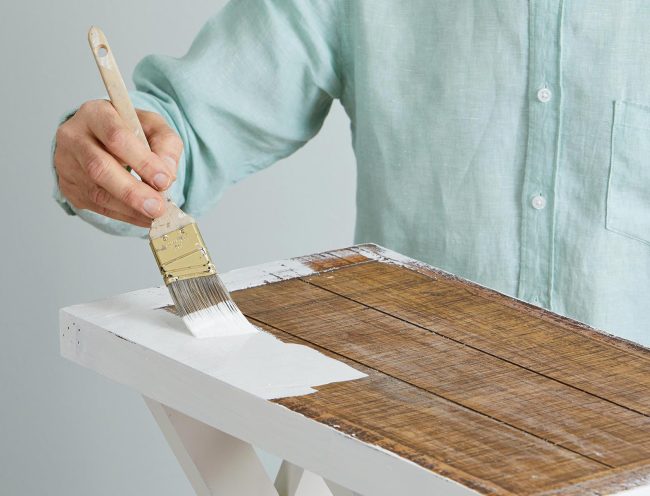
Embrace transforming your home’s exterior with a fresh coat of paint. Preparation is essential; the better the preparation, the smoother the paint application. Begin with a clean canvas by removing any peeling or flaking paint. Repair any surface damages and prime bare spots to ensure an even absorption of the paint.
Once you’ve set the stage, it’s time to bring out your chosen armor — your exterior paint. Apply the paint from top to bottom, covering the surface in a smooth, even layer. Whether you use a roller, brush, or sprayer depends on your comfort and the nature of the surface. The idea is to maintain consistency and avoid drips or streaks.
Generally, a single coat of paint might leave you with a patchy finish. A second coat ensures a more opaque, uniform look. So don’t shy away from that additional coat. Think of it as added protection for your home against the elements.
Remember, painting your home’s exterior is not just a cosmetic upgrade. It’s like adorning your home with a protective shield that also happens to boost its visual appeal. It’s a process that demands your time and patience, but the outcome — a home with beauty and durability — is worth every brush stroke.
Where to Use Specific Shades
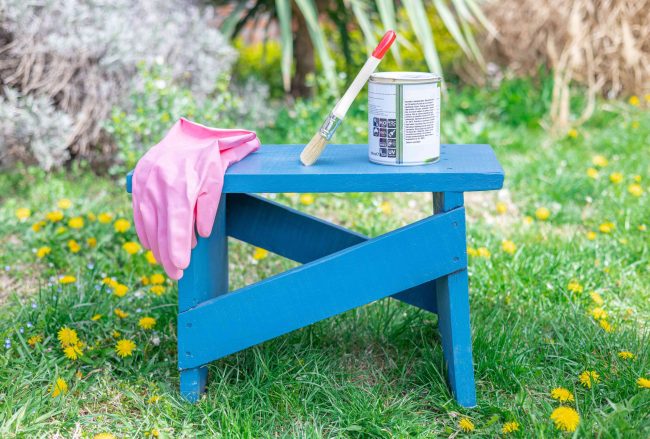
Unleash the power of color by strategically using different shades on your home’s exterior. Imagine your home as an artist’s canvas, where each color you select adds its unique stroke to the masterpiece. Lighter hues applied to vast expanses, such as walls, help your home stand tall and appear more expansive.
Conversely, deeper shades employed on trim, doors, or architectural details can draw the eye, creating a fascinating contrast that adds intrigue and depth to your home’s exterior.
Another vital factor to consider while choosing your palette is the climate in your locality. If your home basks under a bright sun for most of the year, be cautious with vibrant colors, as they may fade more quickly than their muted counterparts.
On the other hand, if you’re nestled in a region that sees more clouds than the sun, warmer, cozier shades might add a welcoming aura to your abode.
The secret to wielding the color wand effectively lies in understanding the subtle interplay of colors, the influence of your local environment, and the impact of architectural elements.
Your home’s exterior isn’t merely a blank wall to be covered in paint; it’s a living, breathing entity that communicates with the world in the language of color. So, speak wisely and let your home tell its enchanting color story.
How to Seal Exterior Paint
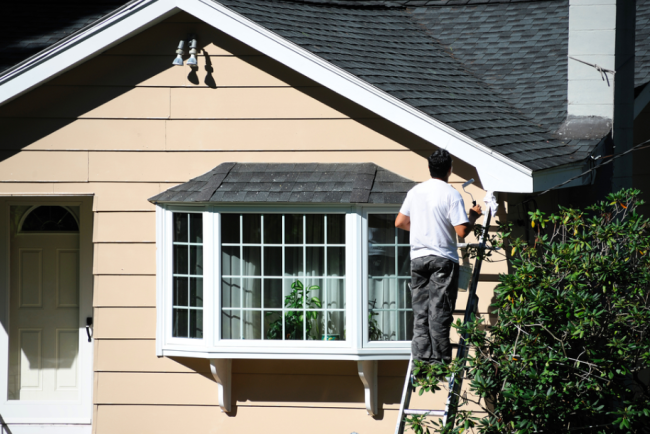
Sealing your exterior paint is an unsung hero in the lifespan of your paint job. It protects your chosen colors from the harsh reality of the elements and adds a polished, eye-catching finish that complements your home’s overall look. After allowing your paint to dry thoroughly, you’re ready to apply a sealant.
Please think of the sealant as your paint’s invisible shield, boosting its defenses while enhancing its look. You’ll want to grab a high-quality sealant and a roller or brush for the application process. The key here is achieving an even coverage; ensure every painted area gets a fair share of the sealant love.
Patience is the name of the game when it comes to sealing. As you allowed your paint ample time to dry, do the same with your sealant.
Rushing this process may result in a less-than-ideal outcome. So, let the adhesive completely dry without interruptions or premature contact. Once it’s set, you can admire your home’s freshly sealed, stunning exterior, brimming with beauty and resilience.
How to Clean Exterior Paint
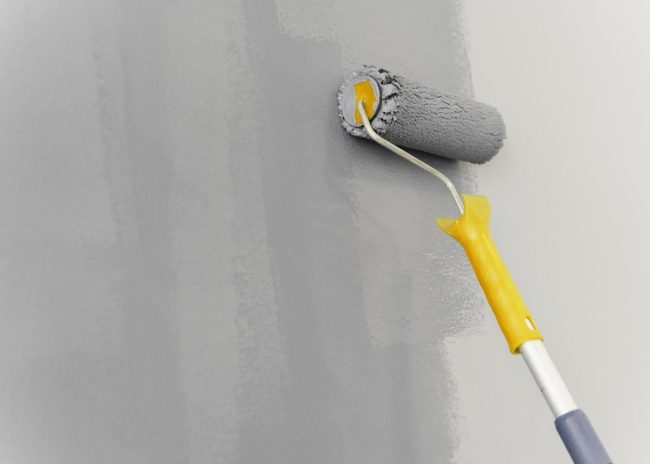
Just as we cherish and protect our favorite wardrobe pieces, our home’s exterior paint needs similar tender, loving care to maintain its charm and vibrancy. Cleaning it regularly can work wonders in keeping it looking as fresh as the day it was first painted.
Dust off loose dirt with a gentle brush, then use a mixture of mild soap and water in a soft wash. This can remove most grime and keep your paint from looking dull. However, avoid being tempted to use harsh chemicals or the brute force of a high-pressure washer; they could prove detrimental to the paint.
Rinse thoroughly and let the surface dry naturally and fully before further treatments, such as sealant application or additional paint coats. Remember, your house’s paint job is more than a fashion statement—it’s a protective layer. Giving it a gentle, regular cleaning is like giving it a little TLC, helping it stay vibrant and robust.
How to Make Exterior Paint Last Longer
Boosting the longevity of your exterior paint isn’t solely about picking high-quality paint or ensuring the surface is perfectly prepped — though these steps are indeed crucial. Adopting some innovative, proactive strategies is the real secret to extending your paint’s lifespan.
Firstly, you should aim to avoid painting in extreme weather conditions. Heat, cold, or high humidity can interfere with the paint’s ability to bond properly with the surface, which may result in peeling or bubbling down the line.
Schedule your painting project during a time of year with milder, more predictable weather to ensure optimal adhesion and drying.
Next, don’t let potential issues like mold or water damage linger. Address these problems promptly, as they can quickly escalate and wreak havoc on your exterior paint. Regular inspections of your home’s exterior will allow you to catch these issues early and rectify them before they take a toll on your paint job.
Finally, remember that even the highest quality exterior paint can benefit from a little touch-up now and then. Rather than waiting for noticeable signs of wear and tear, proactive touch-ups can keep your home’s exterior looking its best. Think of it as a spa treatment for your home — minor, regular treatments can maintain that fresh, vibrant look for years.
Essentially, prolonging your exterior paint’s life is about a little forward-thinking and proactive care. It’s about extending that warm welcome your home offers to the world, maintaining its stylish armor, and enhancing its enduring beauty.





